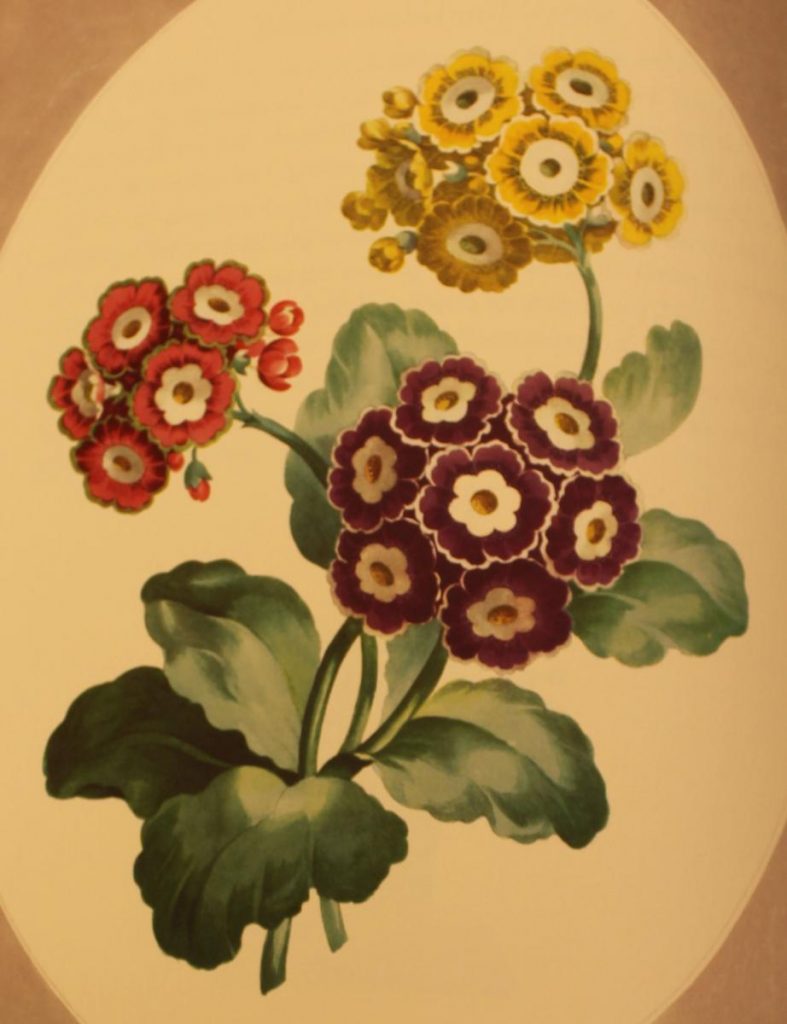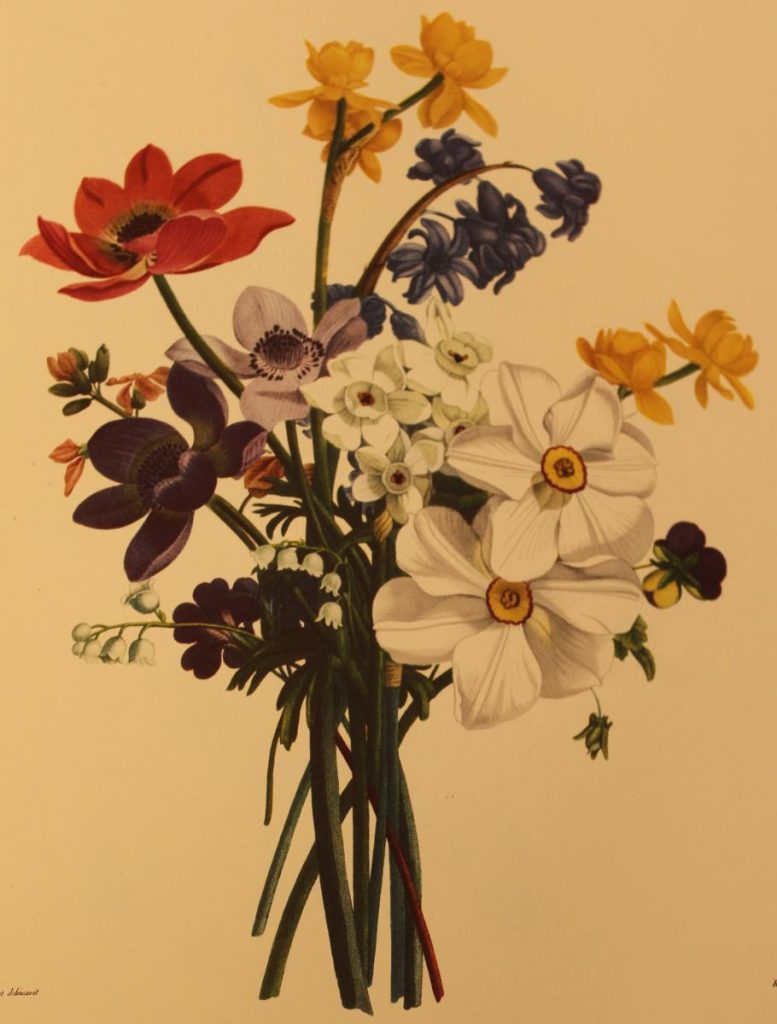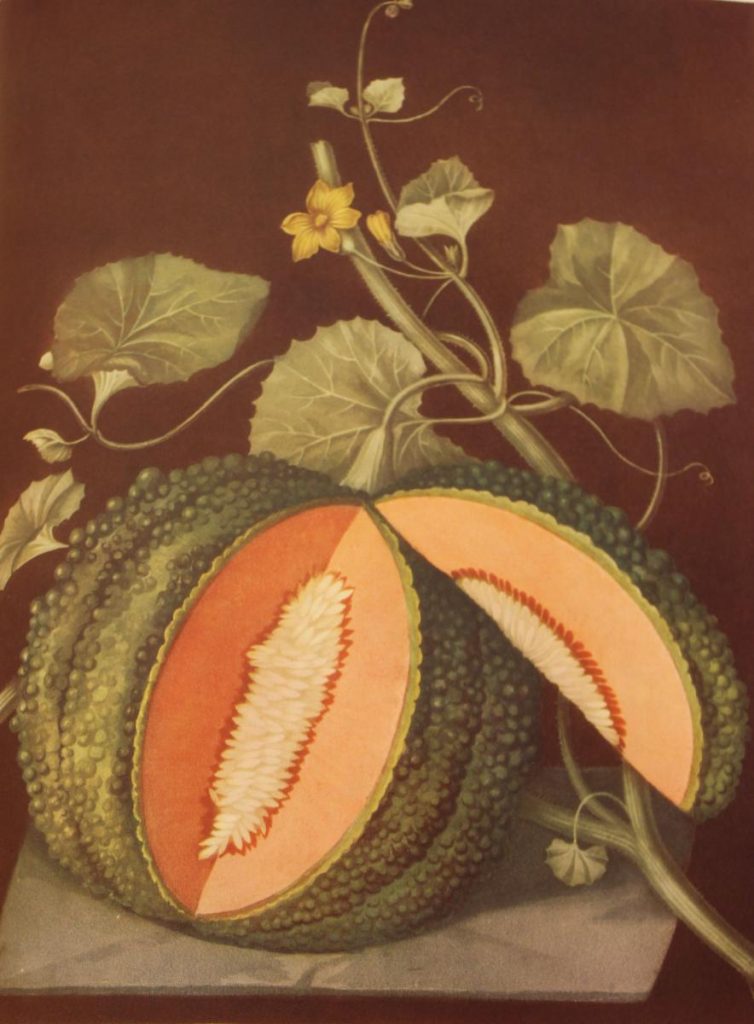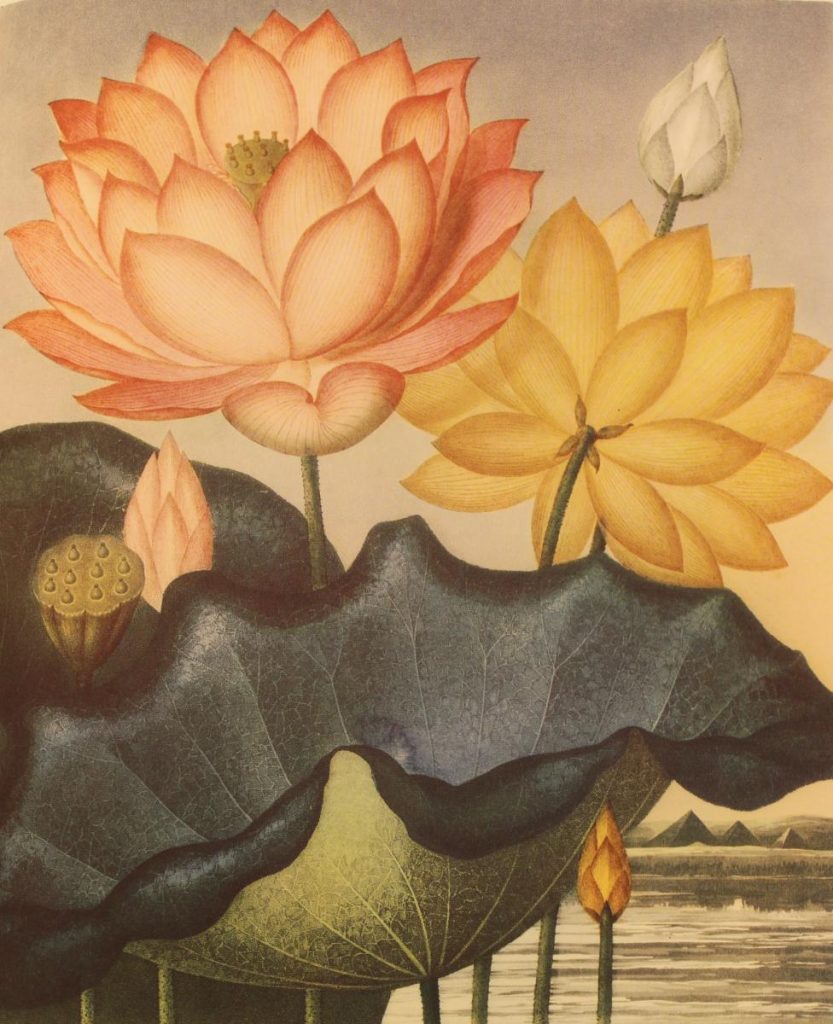
10 Mar From the Vault: Flower and Fruit Prints, 1938
March 10, 2016, 3:05 pm
“The appeal of the flower print is through that elusive quality which may be described as ‘charm.’ It is a compound of process techniques, draftsmanship, arrangement or design and color, mellowed and tempered by time. It speaks of an art which is simple, natural, graceful as the sunlight or the rain. It knows neither contortion nor distortion for in the flower world these are blights and very evil. It is both technique and something more than technique which makes the flower print distinctive in the field of graphic arts.”
Since we are so lucky to be experiencing this early spring weather in Newport, we thought it would be appropriate to share some beautiful floral images. A particularly fascinating book, Flower and Fruit Prints of the 18th and early 19th Centuries by Gordon Dunthorne, traces the historical and societal uses of flower prints. Included in the back is a Catalog Raisonné of the works in which they are found, many of which may be found in libraries across the country.

Amaryllis Equestris Major by Mrs E. Bury, 1831
In 1735 Carl Linnaeus published Systema Naturae, creating a common principle of classification and binomial nomenclature for plants. This is the grouping of family name and species together (for example, Pomona Britannica), and is the system we still use today for scientific naming. After this ground breaking new publication, previous botanical works became obsolete and a new dedication to scientific accuracy in the delineation of flora required the combination of botanical knowledge and artistic skill. Although the early draftsmen to fit this new art form were German, the primary market for their work was England, which was very much interested in the cultivation of fruit and flowers during the early eighteenth century. By the end of the century, English artists had made the field of flower prints their own (see John Hill, John Edwards, H.C. Andrews, James Sowerby and Sydenham Edwards).

Varieties of the Auricula by J. Edwards, 1801
In contrast to the English, the French developed the decorative types of flower image like still life and flower arrangements, which had previously been perfected by Jean Baptiste in the late seventeenth century. This style was fostered and maintained by the King’s court. It is not until the early nineteenth century that scientific accuracy in the representation of flowers becomes popular, but when it does, the French dominate the artistic field almost immediately.

Collection des Fleurs by J.L. Prevost, 1805

Pomona Britannica by G. Brookshaw, 1812

The Sacred Egyptian Beane by Dr. Thornton, 1807
If you are interested in learning more about flower and fruit prints, and their role in the eighteenth century, this book is available for research and viewing with a reference appointment.

Sorry, the comment form is closed at this time.